Kale has seen a surge in popularity over the past decade, with a growing reputation for being a delicious and nutritious green crop. So if you find that your kale seedlings are turning yellow, you’ll want to know why and how to fix them. We all want to give our kale the best possible start in life!
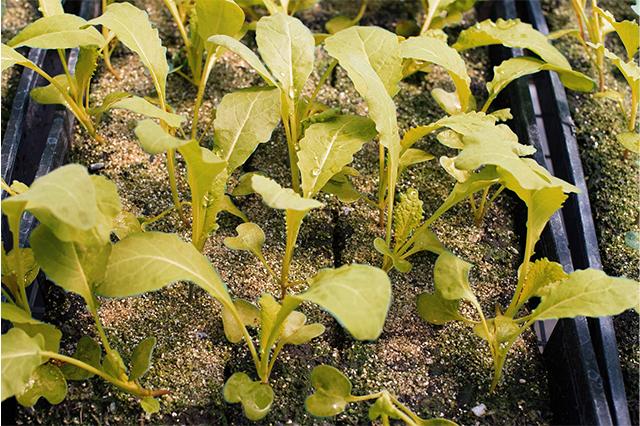
Kale seedlings turning yellow could be caused by overwatering, temperatures that are too high, or a lack of nitrogen. There’s also the possibility that bacterial disease is involved, though this is less likely to be pronounced on seedlings compared to more established plants.
Kale is a delicious and relatively resilient crop that’s easy to grow and maintain once established. So let’s look in more detail at the potential causes of young kale seedlings turning yellow, giving you the confidence to provide your kale with the healthiest possible start.
Related: 8 Kale Pests (And How to Get Rid of Them!) | 6 Causes Of Dying Kale (And How To Fix It!)
Table of Contents
Overwatering Can Turn Kale Seedlings Yellow
There can be a tendency with young plants and seedlings to overwater them. Plants are certainly at their most vulnerable in their earliest stages. This makes us want to try to make sure they have everything they could possibly need to thrive. However, when it comes to water, you can definitely have too much of a good thing.
Although kale seedlings require regularly moist soil in order to grow healthily, overwatered soil can starve the kale seedling of the oxygen it needs. It’s better to err on the side of caution and allow the soil to dry out a little bit before watering. Try not to drown your kale seedlings every morning!
Opt for a well-draining, organically rich potting mix such as this one to ensure that the soil is properly aerated after watering. Too much water not only restricts oxygen flow to the roots but can also damage the root system itself.
A damaged or water-clogged root system prevents your kale seedlings from soaking up the nutrients they need to grow and thrive. This can in turn cause them to turn yellow and withered.
High Temperatures Can Cause Kale Seedlings to Turn Yellow
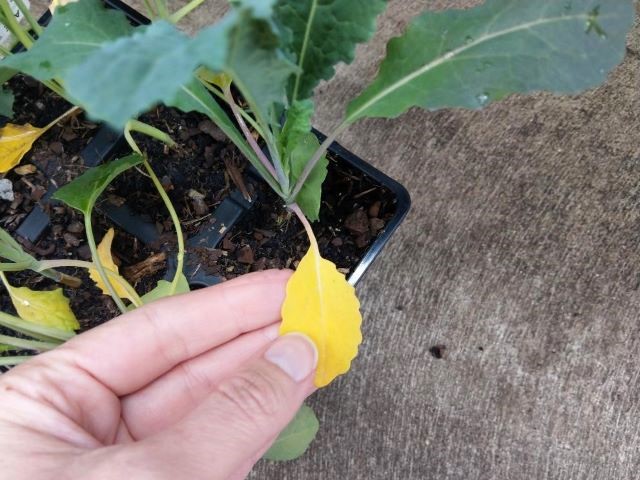
People sometimes forget that kale is a cool weather crop. It struggles to thrive in temperatures much higher than 75 degrees Fahrenheit (24 degrees Celsius), preferring temperatures below 70 degrees Fahrenheit (21 degrees Celsius) if possible.
If you keep your kale seedlings indoors for too long, you might find they’re a bit too warm. This can stress the kale plant and cause yellowing in those early leaves.
If growing kale from seed inside, you’ll generally find that 4 to 6 weeks is plenty of time for them to be ready for the great outdoors. Transplanting them outside at this time, providing your planting in a relatively cool period of early Spring or very late Summer, should give them the cool temperatures and space they need to thrive.
If you’re growing from seed outside and the weather has turned unseasonably warm, you can try protecting them from the sun in order to cool them down. Partial shade cover for fixed beds can be a good idea, or if you’re growing in pots then simply move indoors or to a cooler spot in the garden.
Lack of Nutrients, Specifically Nitrogen, Can Cause Seedlings to Yellow
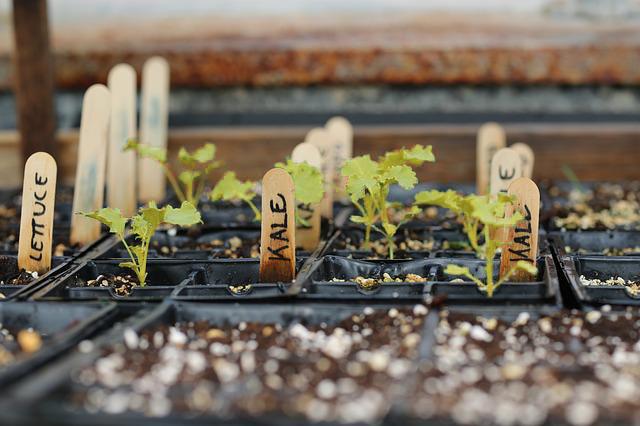
Different gardeners will give different advice when it comes to fertilizing young seedlings. Some will encourage you to start applying gentle fertilizer as soon as the first leaves start to put out. Others will warn you off giving fertilizer to the plant too soon.
If you have planted or grown your kale seedlings in organically rich soil that has been properly prepared with fine organic compost beforehand, they’re unlikely to be nutrient deficient at this point of their journey. It’s also worth bearing in mind that the seed from which the initial seedling sprouts contains all the nutrients the plant is likely to need for the first few weeks of its life.
Applying too much fertilizer too soon can effectively overfeed the kale plant, causing damage or preventing your kale seedlings from soaking up nutrients effectively.
Be especially mindful if adding fertilizer to tiny pots or individual seed trays, as these are more likely to become saturated. A fertilizer overload can sometimes be seen in a buildup of white mineral deposits around the drainage holes. In this instance, flush the pot out by watering it without adding any more fertilizer.
However, yellowing leaves can be a sign of nitrogen deficiency. Nitrogen is the nutrient most commonly used for healthy green growth, the sort of growth that is kale’s priority at this early stage of its life cycle.
If you think your temperature and your water levels are correct, it may be that your kale seedlings require a gentle nitrogen nudge in order to help keep them green and happy.
If adding fertilizer, make sure it’s properly diluted according to packet instructions. You can even dilute a touch further when it comes to kale seedlings, just to be on the safe side. It’s a good idea to go for a gentle, organic product, something with a 2-4-1 like this one, or 2-2-2 balance.
Bacterial Disease Can Sometimes Be a Cause of Kale Yellowing
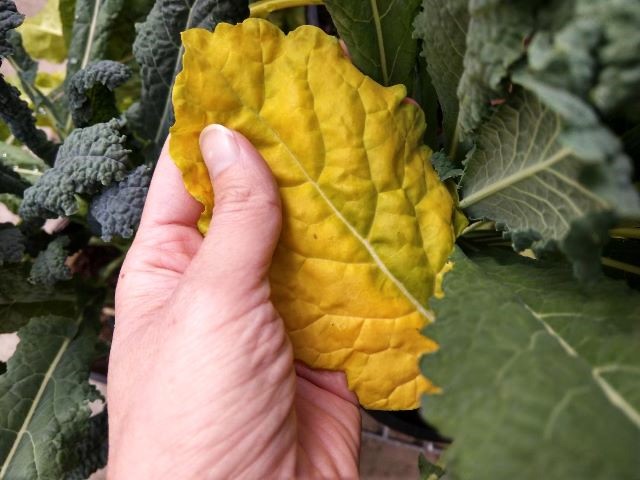
There are several bacterial diseases that can cause kale leaves to turn yellow and wither. Some of these bacterial strains can be particularly harmful, resulting in the overall death of the plant.
It is less likely that your kale seedlings will show signs of bacterial disease at the early stage of their development. Nevertheless, being mindful of some of the symptoms can be helpful, particularly since it can allow you to dispose of any infected plants at the earliest opportunity. This can reduce the risk of bacterial damage spreading to other plants.
Black rot is one disease affecting kale that can cause the entire plant to die. It will often start out as yellow or light brown patches at the edge of leaves. Later, leaf veins will turn darker and the bacterium can enter the circulatory system of the plant. This can cause systemic failure and plant death.
Many companies test for black rot in their seed due to its possible severity. If you are buying seed from reputable traders, this shouldn’t be an issue.
Other forms of bacterial disease are not necessarily screened out by traders, but you can reduce the chance of seed being infected if the seller is reputable and produces seed in dry environments.
Many forms of bacterial disease thrive best in warmer, damper conditions. This is another reason to ensure your kale is grown during the cooler months.
Are Your Yellowing Kale Leaves Actually Cotyledons?
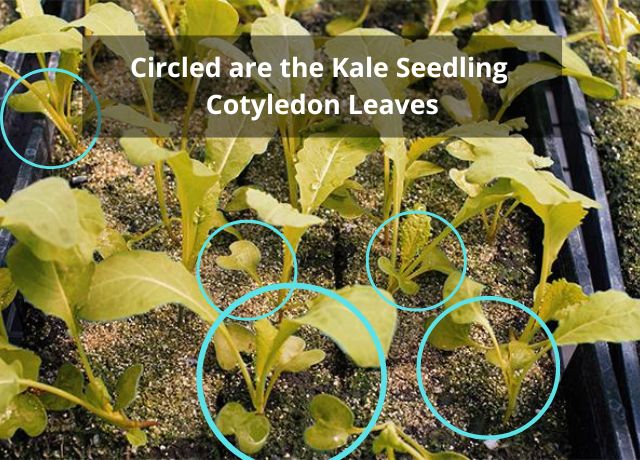
What is a cotyledon, I hear you ask? Cotyledons are the first green shoots that your kale puts out following the seed’s germination.
These are effective ‘beginner leaves’ and help get the young plant up and running. They contain nutrients to sustain the baby plant, nutrients that were packed inside the seed, to begin with. They also carry out some photosynthesis to give the plant its initial energy boost.
Cotyledons will look slightly different from later leaves that emerge on the kale plant. Any leaves that emerge after these first two cotyledons are going to be ‘true leaves. Once the true leaves have started growing, the cotyledons are no longer required and will start to wither and drop off. This can sometimes involve yellowing.
This is a natural and healthy part of the process! If it’s just the cotyledons turning yellow, but the rest of your kale seedling leaves look healthy and green, don’t panic. Only if your true leaves are turning yellow is it a sign that something might need fixing.
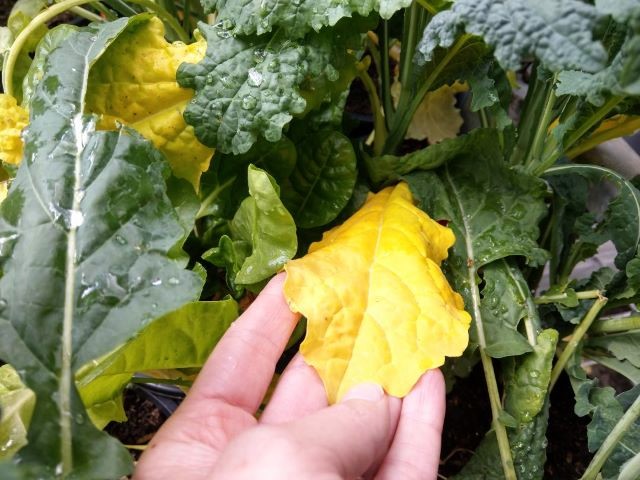
Related Reading:
